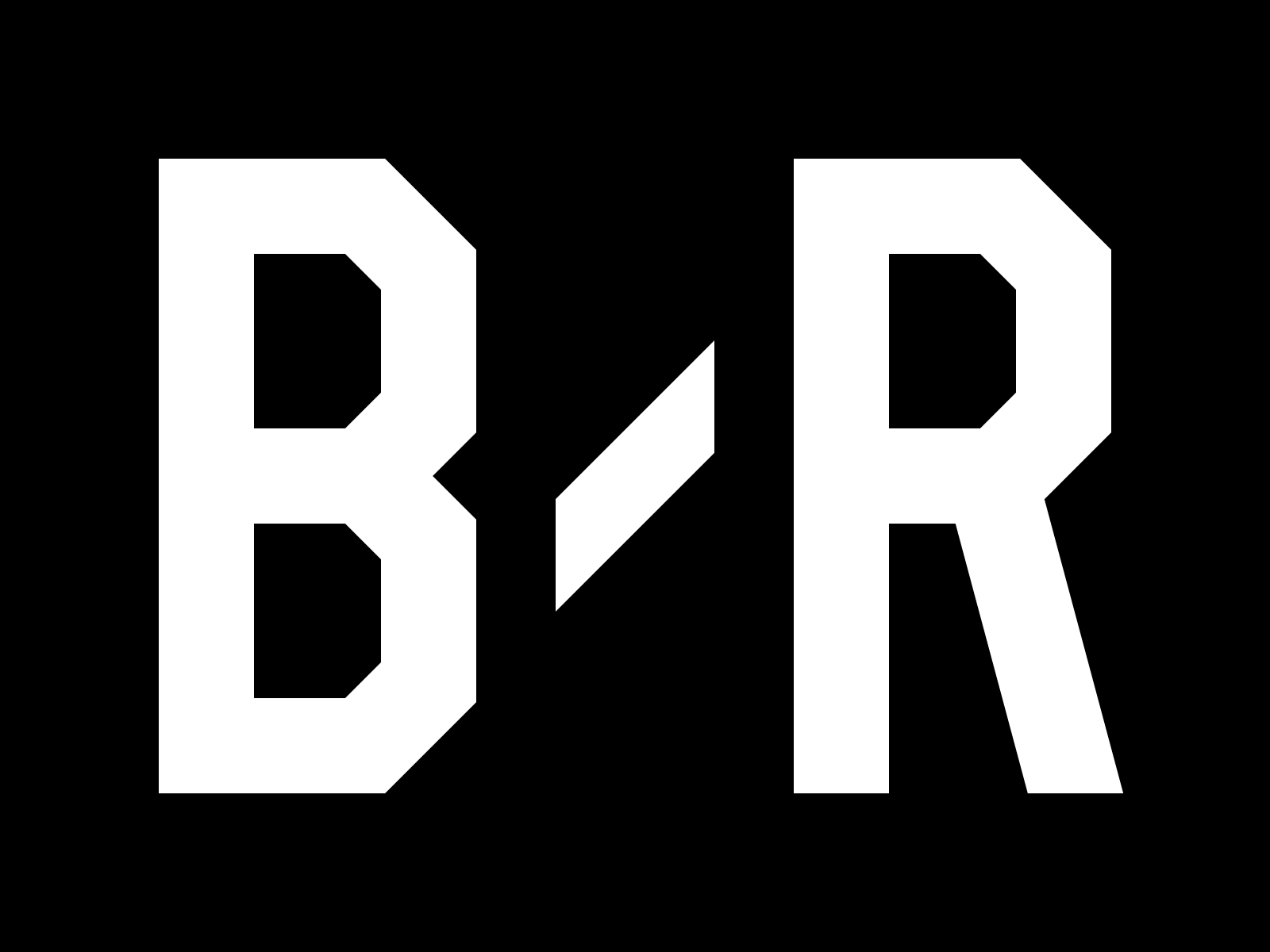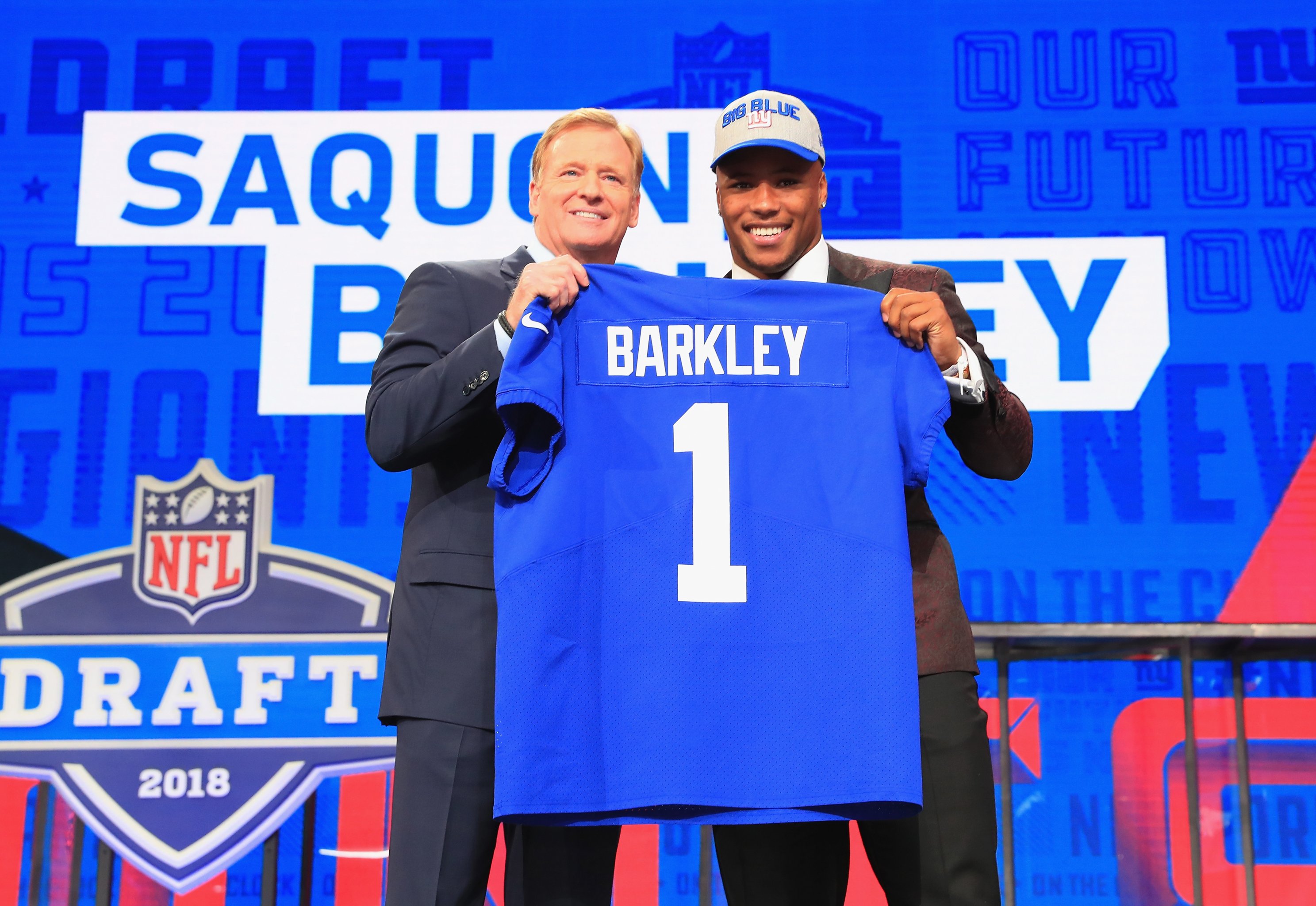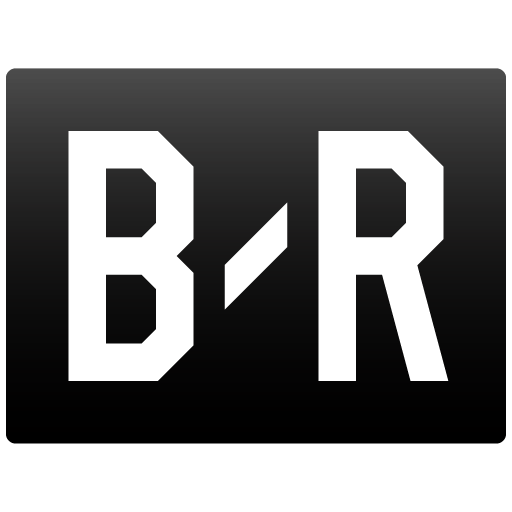With the dust settled on the 2018 NFL draft, it's time to dish out takes on this year's class. We won't hand out grades but will focus on Day 1 and 2 selections and situations that didn't make sense.
There are prospects who were drafted much higher than anyone—even people connected to the league—expected, or players whose draft slots will set a bar they can't reach. That isn't the prospects' faults, but that of the teams that reached for them Thursday and Friday.
These circumstances are a list of "how not to draft in 2018," brought to you by eight NFL franchises.
Giants Take a Running Back No. 2 Overall

According to Spotrac, the New York Giants guaranteed Saquon Barkley $31 million in his rookie contract, which will be the second-most for any running back in NFL history. When you take a back as high as Giants general manager Dave Gettleman did, the expectations based on dollars alone are almost unattainable.
Barkley may be above-average, but it will be tough for him to live up to the investment. He also likely won't make as much of an impact as the four quarterbacks who were drafted between New York's first and second picks (No. 34 overall): Sam Darnold, Josh Allen, Josh Rosen and Lamar Jackson.
Speaking of that second selection—offensive lineman Will Hernandez—Nick Chubb, Ronald Jones, Kerryon Johnson and Derrius Guice were all still on the board when the Giants made it. It would have been reasonable for them to take a non-running back at No. 2 or even trade down, like the Indianapolis Colts did at No. 3 to add three second-round picks, and still expect a starting-caliber tailback to be there at no. 34.
Instead, Gettleman made the decision that all analytically inclined people would have said to avoid and then immediately made a fool out of himself in a press conference by mocking said people. Teams make busts; players don't. Gettleman will regret his move in three to six years, but it won't be Barkley's fault.
The Colts Draft FCS Linebacker Darius Leonard No. 36
The Indianapolis Colts' selection of South Carolina State linebacker Darius Leonard with the fourth pick in the second round was one of the draft's worst moves. They took four second-rounders, so they had plenty of room for error, but this one stands out as a head-scratcher.
In the 2017 draft, no FCS off-ball linebacker was taken. In 2016, the top FCS off-ball linebacker (Kamu Grugier-Hill) was picked No. 208. In 2015, the top FCS off-ball linebacker (Kyle Emanuel) was taken 153rd. In 2014, the top FCS off-ball linebacker (Jordan Tripp) was taken 171st. For whatever reason, we woke up Friday in a world where Indianapolis thought taking an FCS linebacker in the top 40 was a good idea.
The selection was turned in with running backs Ronald Jones, Kerryon Johnson and Derrius Guice still on the board. The Colts need a No. 1 back, considering their top returning rusher from last season, Marlon Mack, only has 358 career rushing yards and three scores.
Breeland Speaks Goes No. 46
Any Kansas City Chiefs fan will tell you one of the team's biggest issues is how frequently it drops its All-Pro outside linebacker, Justin Houston, into coverage. Clearly the team's best pass-rusher, Houston often drops back to free up a liability in coverage opposite him.
With the selection of 283-pound hybrid outside linebacker-defensive end Breeland Speaks, Kansas City is embracing this Houston-drop defense. This comes one year after it drafted the 289-pound Tanoh Kpassagnon with the 59th pick. Chris Jones, a 2016 second-rounder, also fits the mold of a defensive lineman who can play inside or outside the offensive tackle.
The team's 2018 third-round selection, Florida State defensive tackle Derrick Nnadi, only further complicates the issue. Kansas City's front office, which crafted a defense that ranked 30th in Football Outsiders' DVOA metric last season, is shooting itself in the foot. It's consistently throwing assets at one position, the hybrid lineman, when it could have drafted a true 3-4 outside linebacker and opened things up for Houston.
Baltimore Selects Hayden Hurst No. 25
After using the 25th pick on Hayden Hurst and the 86th selection on Mark Andrews, the Baltimore Ravens have spent an NFL-leading four top-100 picks on tight ends over the last five drafts. Hurst and Andrews, along with Crockett Gillmore and Maxx Williams, show Baltimore values the position more than any team.
If the Ravens knew then what they know now—that Andrews would be available in the third round—would they have used the 25th pick on the 24-year-old Hurst? If given the chance again, would they have just taken quarterback Lamar Jackson, whom they selected after trading up to No. 32?
At different points in the draft cycle, Hurst, Andrews, Mike Gesicki (taken 42nd by the Miami Dolphins) and Dallas Goedert (taken 49th by the Philadelphia Eagles) were discussed as both the first tight end off the board and as first-round picks.
Baltimore may have jumped the gun on an early tight end run while later taking advantage of a calm market in the third round. If we gave Ozzie Newsome a truth serum, he may admit he made a mistake in his final Day 1 as general manager.
New Orleans Trades for Marcus Davenport
There's logic in the New Orleans Saints' selection of UTSA pass-rusher Marcus Davenport at No. 14. The mid-major prospect recorded 21.5 sacks and 37.5 tackles for loss in his college career, even if they didn't come against future NFL players.
What isn't rooted in logic is how the Saints acquired the 14th overall pick. They gave the Green Bay Packers two first-rounders (one in 2018 and one in 2019) and a fifth-round pick to acquire that selection. The Packers later flipped the Saints' 2018 first-round pick and a third-rounder to the Seahawks for the 18th overall selection and a swap of Day 3 picks.
To make this short, the Packers started the draft with the 14th and 76th overall picks and walked away with the 18th selection and New Orleans' 2019 first-rounder. That's a magic trick. To say the least, the Saints overpaid first-year Green Bay general manager Brian Gutekunst for the move up.
Seattle Grabs a Running Back Instead of Fixing Its O-Line
If you want to improve your running game, you should invest in your offensive line. Most NFL teams know this, as they repeatedly pay offensive linemen much more than young backfield talent.
The Seattle Seahawks didn't gain a single yard from their running backs inside the 10 last year, but that doesn't mean they should have reached for San Diego State's Rashaad Penny—who wasn't in anyone's first-round mock—with the 27th pick. In fact, eight offensive linemen were selected from the 27th to the 76th picks, their second selection at the time, which they eventually traded down from. That's not including the four offensive linemen who were taken between pick Nos. 18, which they traded down from, and 27.
The Seahawks had chances to improve their struggling O-line and elected to trade back and ignore the position. It wasn't until the 168th pick, 48 selections after they drafted a blocking tight end, that they took an offensive lineman (Jamarco Jones).
Seven O-linemen were drafted in the fifth round last year, the same frame the Ohio State product Jones was taken in. Together, those seven started eight games, with all the missed time coming because of injury. If Seattle can't block, it won't be able to run in the red zone.
Good luck, Russell Wilson.
Nose Tackles Go Nos. 12 and 13
Along the same lines as some of these running back selections, the Tampa Bay Buccaneers and Washington Redskins made mistakes with their first-round picks. After trading back from seventh to 12th overall, the Buccaneers took Washington nose tackle Vita Vea, who recorded 9.5 sacks and 15 tackles for loss in his college career.
Immediately after, the Washington Redskins spent the 13th pick on Alabama's Da'Ron Payne, who recorded three sacks and five tackles for loss in his Crimson Tide tenure.
To put that into perspective, fifth-round defensive tackle Maurice Hurst posted 13.5 sacks and 32 tackles for loss for Michigan. Defensive linemen are incredibly valuable, but only if they're influencing plays in the backfield.
Vea made his name making one- and two-yard tackles at Washington, while Payne seemingly only had two great games—against Florida State and Georgia—in his final season. To compare these players to Haloti Ngata or Dontari Poe would be disingenuous.
According to Pro Football Reference, 12 of 32 NFL teams ran defenses that resulted in positive points expected. With how efficient passing games are, baiting teams into a run is almost universally positive. Run-first defenders are a dying trend because the league changed rules to make those players less valuable. Despite that, we saw two run-first defensive tackles go in the first half of Thursday's first round.
The Oakland Raiders' 1st Two Days
Jon Gruden's first draft since returning to the NFL was controversial. At No. 15, the Oakland Raiders selected UCLA offensive tackle Kolton Miller. Miller wasn't considered a potential first-round pick until after the combine.
Based on the draft boards of NFL Network's Mike Mayock and Bleacher Report's Matt Miller, Kolton Miller was taken about a half-round too early, which represents significant value at the start of Day 1. The team's second-round pick, P.J. Hall, was an unheralded defensive tackle out of Sam Houston State. He was not featured in Mayock's top 100 and was Miller's 12th-ranked defensive tackle—behind three players who were not drafted in the top 100.
Hall said he was "shocked" he went so early, according to Vic Tafur of The Athletic. With the first pick in the third round, the Raiders grabbed another offensive tackle and small-school prospect, Brandon Parker out of North Carolina A&T. With Donald Penn as a starting-caliber bookend, the Raiders had positions of larger need than a swing tackle.
They then rounded out Day 2 by selecting pass-rusher Arden Key of LSU, whose weight has fluctuated from around 280 pounds to under 240 pounds over the last year. Overall, Gruden's 2018 draft class looks like a high-risk, high-reward bunch.



Read 0 Comments
Download the app for comments Get the B/R app to join the conversation